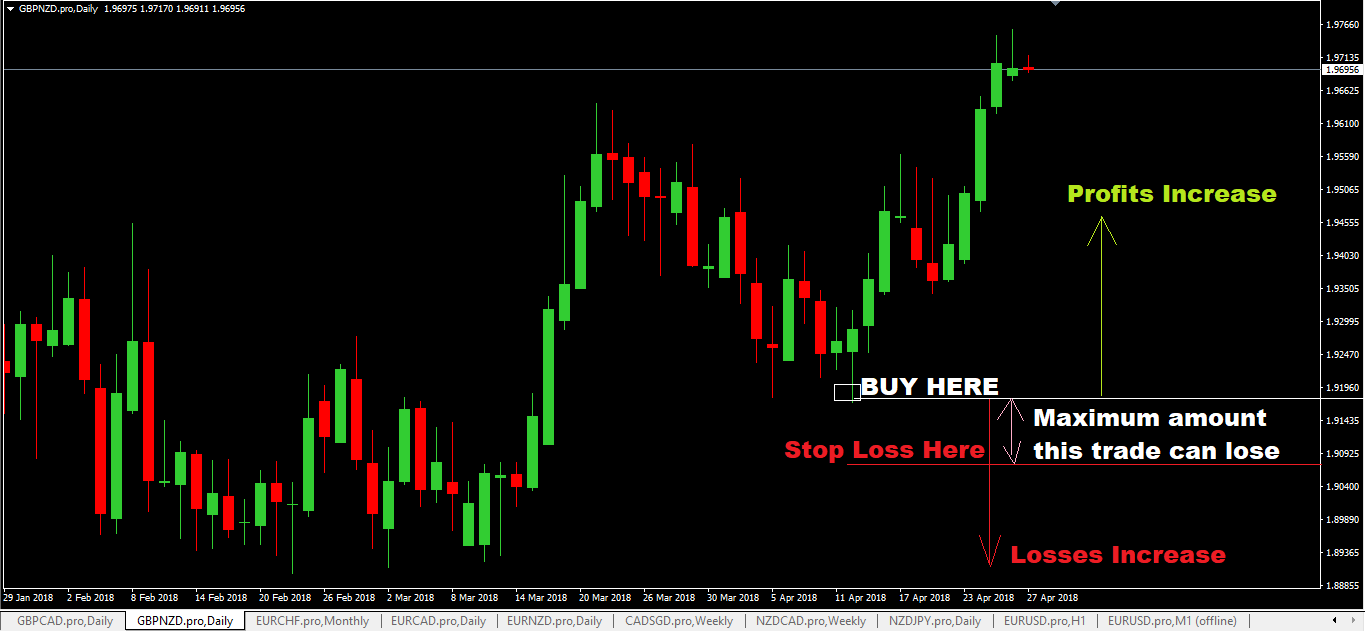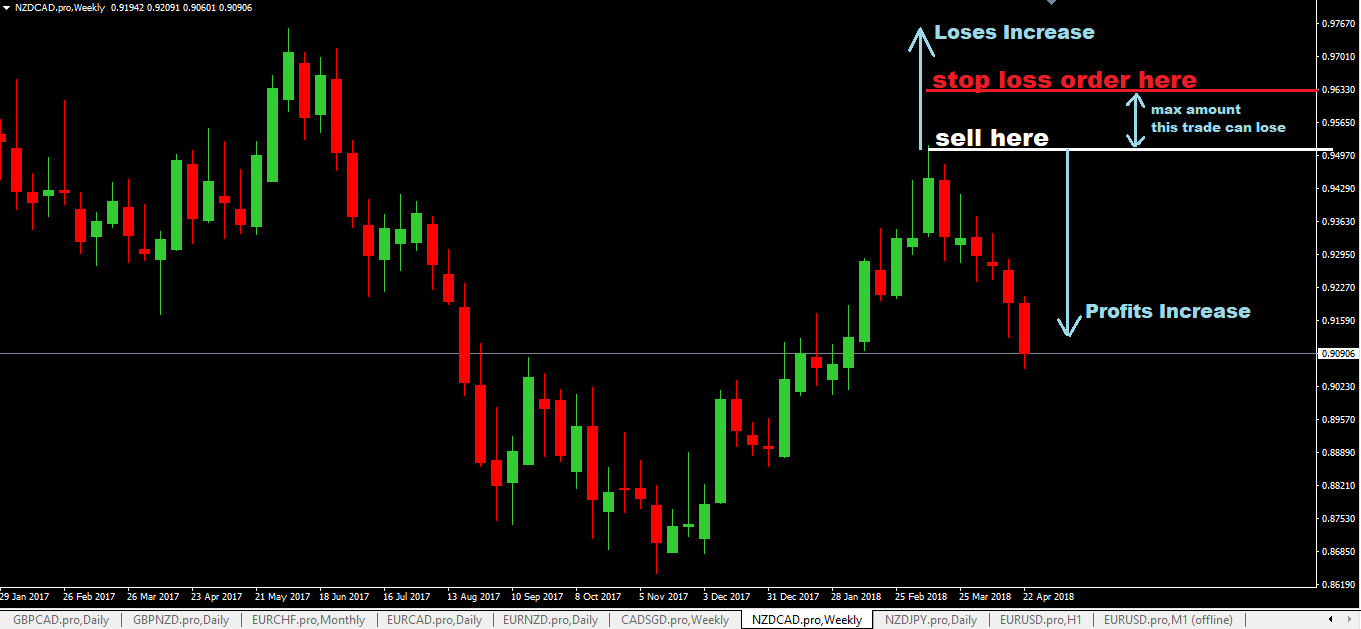What is a stop loss or stop loss order to be precise? In this post, you will learn:
- What a stop loss is
- Where and how to place a stop loss order when trading
- How to calculate stop loss
What Is A Stop Loss Order?
A stop loss is simply an order to close a trade when the price moves against the trade. And there’s one main reason for doing that: to manage trading risk.
A stop loss order prevents you from losing more in a trade.
Here’s how the stop loss order works for a buy and a sell trade situation:
- For a buy trade, a stop loss order will automatically close that trade when price moves down and hits the price level where you want the stop loss order close the trade.
- For a sell trader, a stop loss order will automatically close the trade when price moves up to a price level where the stop loss order was set.
Here’s an example: Joe has a $10,000 trading account and buys 1 standard contract of EURUSD at 1.3500 and places his stop loss 40 pips. The only time Joe’s trade will show a negative profit is when the price is falling below 1.3500.
For a 1 standard contract, a 40 pips stop loss =$400 risk. (The value of 1 pips for a standard contract =$10). So if the price falls to 1.3460, Joe’s trade will be automatically closed out with a $400 loss.
Now, what if Joe did not put a 40 pips stop loss?
What if the price fell 150 pips from the buy price of 1.3500?
Well, that means that the next time Joe opens his computer and checks his trade, he will be staring at a paper loss of $1,500! A paper loss is a trading loss that hasn’t been closed yet.
Now, Joe can hope and pray that the price will go back up so his losses will start to decrease or manually close the trade with a real $1500 loss.
Where To Place Stop Loss?
If you are entering a buy trade, stop loss is always placed below the buy entry price. If the price moves up, you will start making profits, but if the price moves down, you start making a loss.
Now, if you don’t have a stop loss on a buy trade, the more the price moves down, the more your trading losses will increase and you can lose your entire trading account.
Stop Loss Order Example For A Buy Trade
On the chart below, assuming Joe bought GBPNZD as shown:
- The maximum loss Joe can suffer in this trade is if the price moves below his buy price, and hits the price where his stop loss was placed.
- However in this case, the price rose higher instead of going down, so Joe’s profit increased as the price went up.
- If he never placed a stop loss and the price somehow went down instead of up, his losses would increase if there was no stop loss order to get him out of his trade.

Stop Loss Order Example On A Sell Trade
On a sell trade, the situation would be similar but the exact opposite:
- Stop loss order is placed above the sell entry price
- The maximum loss that can be suffered in a sell trade is when the price moves from the sell entry price and goes up and hits the price where the stop loss is placed.
- If there is no stop loss and the price keeps rising, the trading losses will continue to increase.

How To Calculate Stop Loss
The most common type of stop loss is what is called a percentage based stop loss.
A percentage based stop loss is simply allocating a certain percentage of your trading account that you are willing to risk on a trade.
For example, if you have a $10,000 trading account and you are willing to risk 2% in each trade then that equates to risking in dollars, $200 per trade.
Now, having a $200 risk does not tell you how far away you will place your stop-loss order on the charts.
- Now in the forex market, a stop loss is calculated in Pips.
- It would be best if you calculated how many pips is $200.
- For one standard contract, $200 equates to 20 pips on the EUR/USD.
- That tells you, that whatever price you buy or sell, you need to place your stop loss order 20 pips away from that entry price and if the price goes against your trade by 20 pips, your stop loss order will get hit and you will lose $200.
Can You Trade Without A Stop Loss Order?
Yes, you can. Is it a good idea? I don’t think so. I have never traded without a stop loss.
I sleep much better at night knowing that if the price goes against my trade, I only suffer what I already predetermined before I placed my trade.